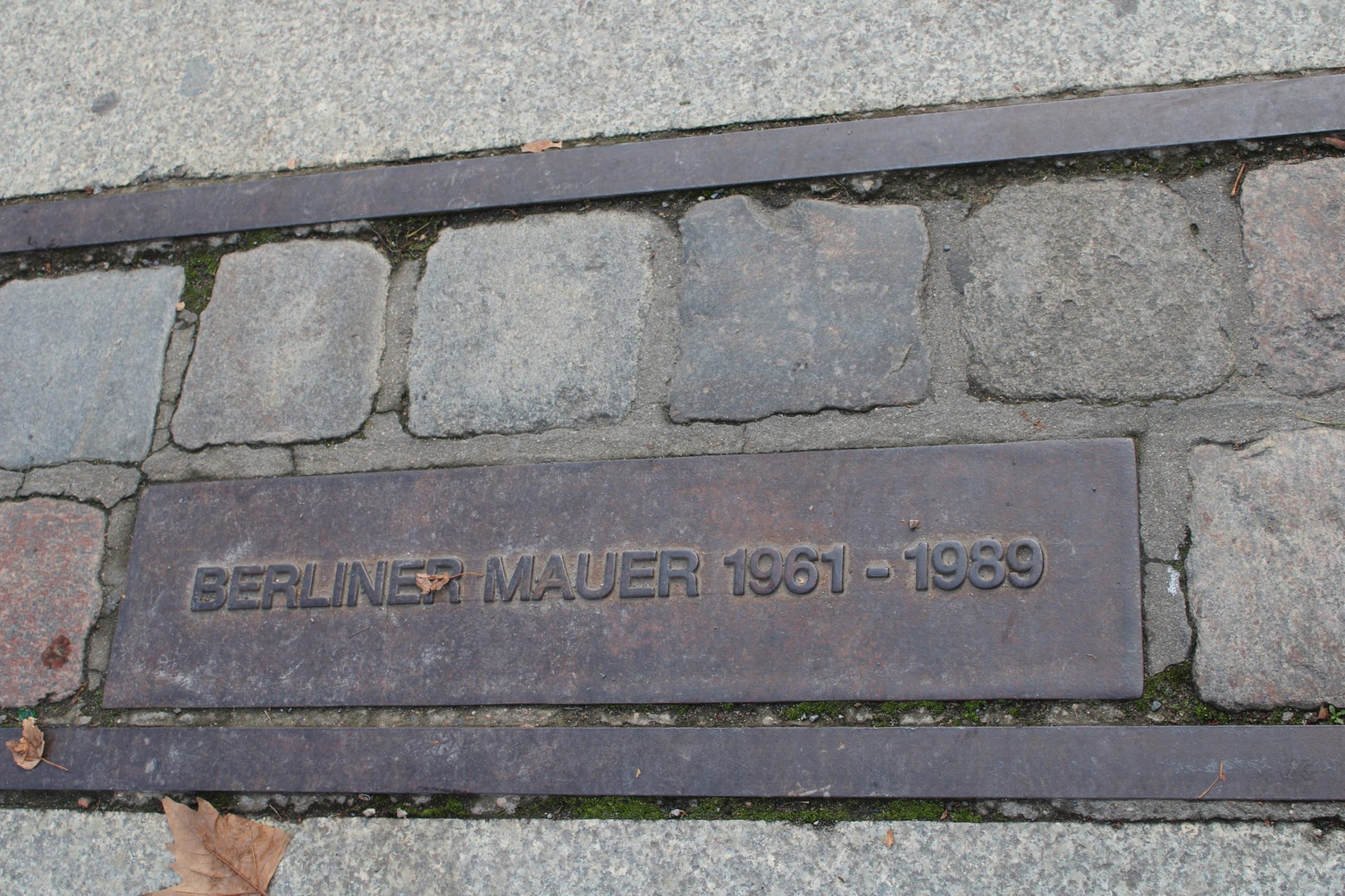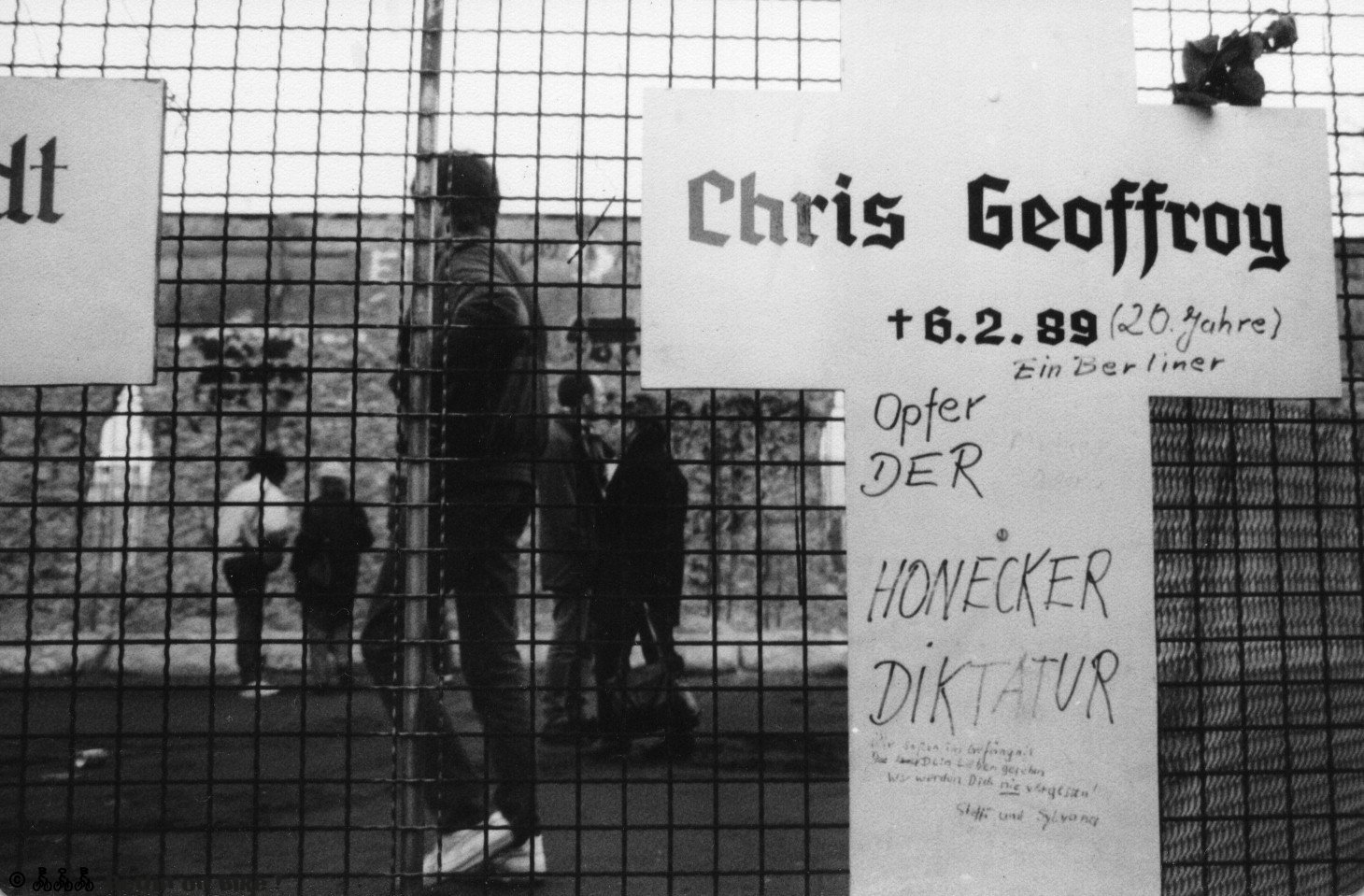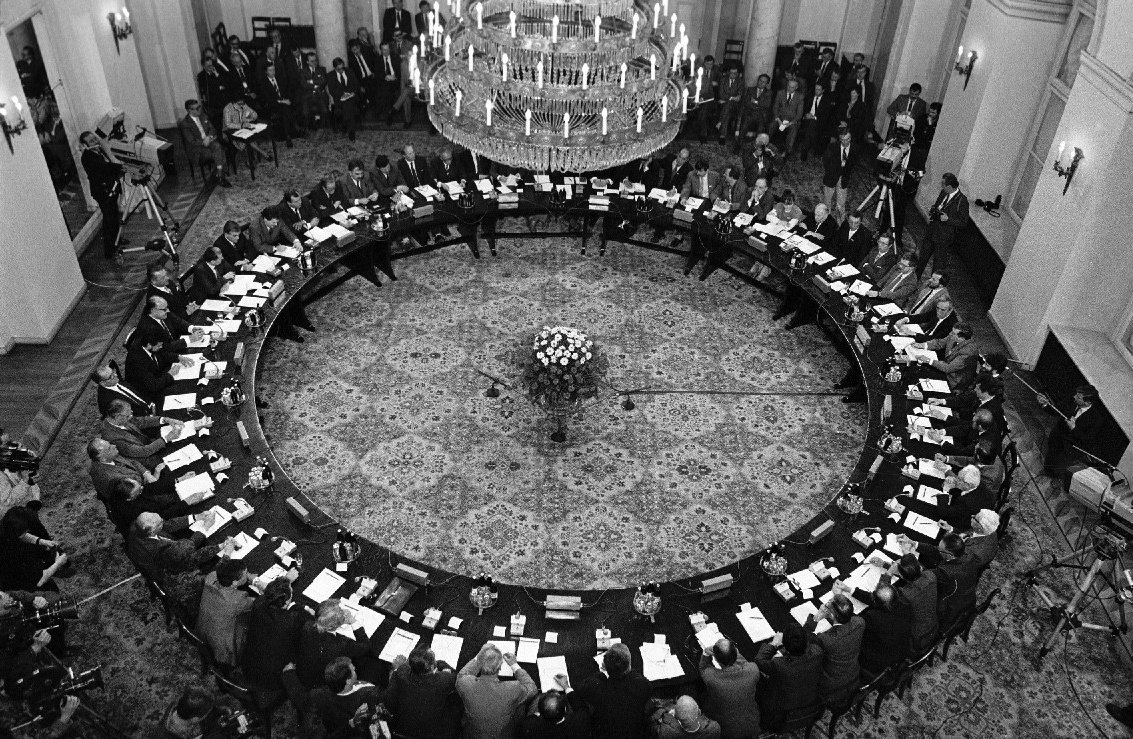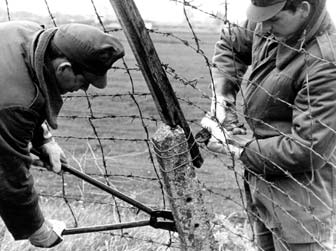30 years fall of the Berlin wall – a retrospection

In november 2019, it was 30 years ago that the Berlin Wall came down. We looked back at this important moment in history, with a special blog series about the last months before the Berlin Wall came down. We’ve summarized all the articles here below. Enjoy the read!
January 18th 1989 – “The Wall will still be standing in a 50 and 100 years!”
Erich Honecker was the leader of the GDR between 1974 and late 1989, and by far the most powerful politician of the East-German state. He left a lasting impression on the East-German history, and not only by his prophecy about the Berlin Wall. Read on

©Stefan Richter: Weisses Kreuz zur Erinnerung an Chris Geoffroy in der Nähe des Berliner Reichstages
February 5th, 1989 – Chris Gueffroy – The last one shot
Chris Gueffroy, the last victim of the Berlin Wall’s “shooting order,” lost his life trying to escape East Germany in 1989. A talented gymnast, he resisted the pressure of competitive sports in the GDR. Despite rumors of the shooting order’s suspension, Chris was fatally shot while attempting to flee with his friend. – Read on
March 8th, 1989 – Winfried Freudenberg, the last victim
Winfried Freudenberg, an East German electrical engineer, and his wife Sabine sought freedom by building a gas balloon to escape to the West in 1988. Despite meticulous planning, Winfried attempted the escape alone, tragically crashing in West Berlin, resulting in his death. – Read on
March 21st, 1989 -The Soviet Army Shrinks
Gorbatschov’s doctrine asserted that Warsaw Pact states would shape their own destinies. While the USSR wouldn’t impede national reforms, it wouldn’t support counter-revolutionary elements. This turned out to be a key catalyst for the 1989 revolution. – Read on.
April 3rd, 1989 – 30 Years later: no more shooting.
The revelation of the standing order to shoot at the Berlin Wall, tested the emerging unified society. Initially denied, evidence emerged in the 1990s confirming its existence. Soldiers faced trials for murder based on Order 39/60, indicating that the shoot-to-kill policy actually excisted. – Read on
 April 5th, 1989 – Round Tables in Poland
April 5th, 1989 – Round Tables in Poland
In the late 1980s, the concept of the Round Table emerged in international policy-making, aiming to gather all stakeholders equally. In East Germany, Round Tables played a crucial role in understanding needs before German reunification. Despite benefits, rushed unification overlooked East Germans’ perspectives. In Poland, the first Round Table achieved significant agreements, including legalizing Solidarnosc and introducing free elections. – Read on
April 26th, 1989 – Honecker losing grip on reality

Ungarn baut den Grenzzaun zu Österreich ab (Quelle: Kronenzeitung/AP)
May 2nd, 1989 – The iron curtain becomes porous
June 27th, 1989 – Horn and Muck dismantle the Iron Curtain
Hungary’s 1989 border opening to Austria, highlighted by Foreign Secretaries Horn and Mock cutting through razor wire, marked the Iron Curtain’s end. Despite risks, GDR citizens rerouted through Hungary and Austria for freedom. This spurred holiday changes and heightened tensions, leading to tragic incidents. – Read on
August 19th, 1989 – The Iron Curtain is becoming increasingly perforated
The Iron Curtain’s erosion accelerated with a symbolic border fence cut between Austria and Hungary in June, leading to a pivotal moment at the Paneuropean picnic in August 1989. Despite suspicions and fears, hundreds successfully fled to Austria, showcasing the power of individual humanity in shaping historical change. – Read on
September 10th, 1989 – New structures, New Forum

